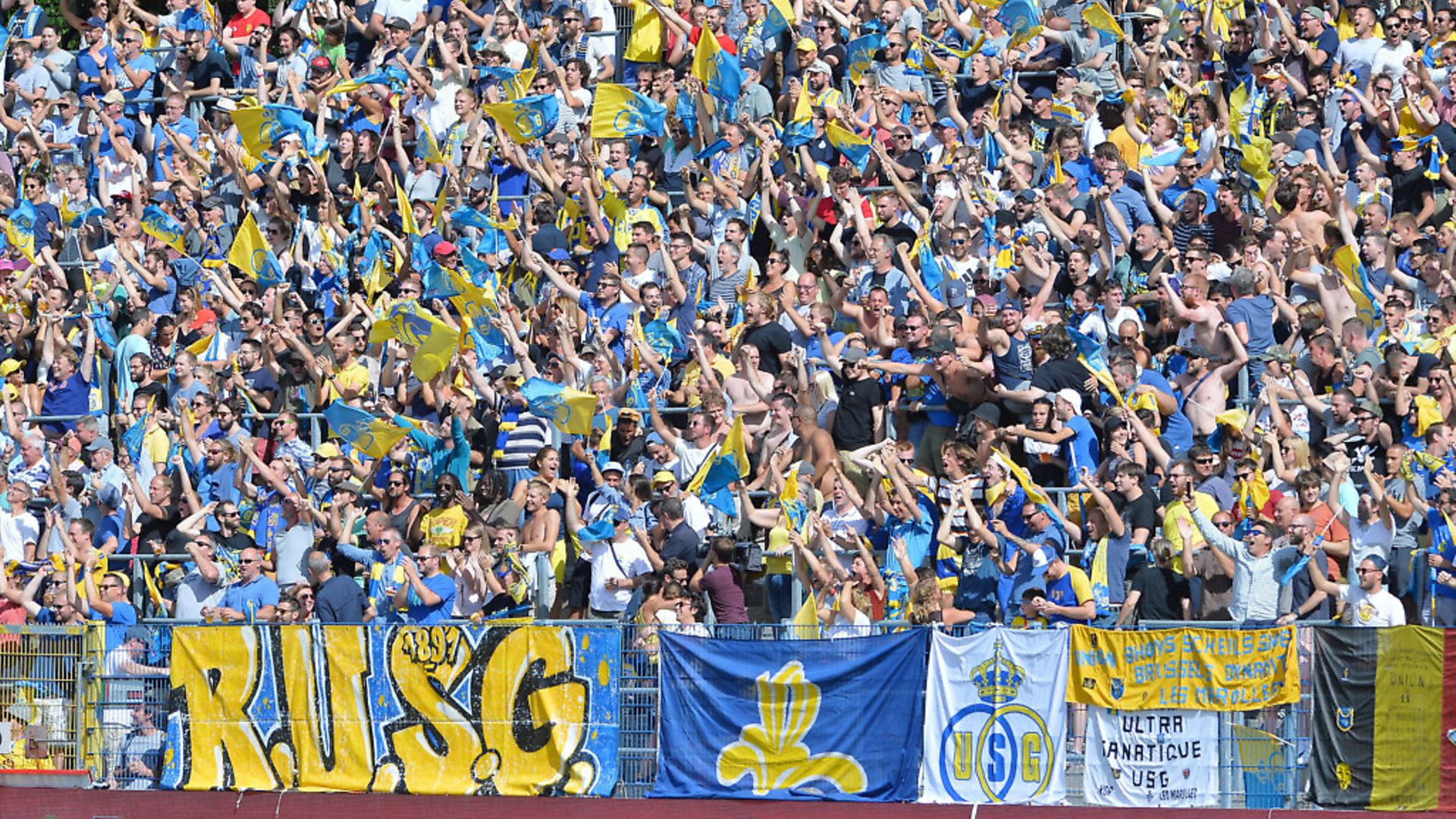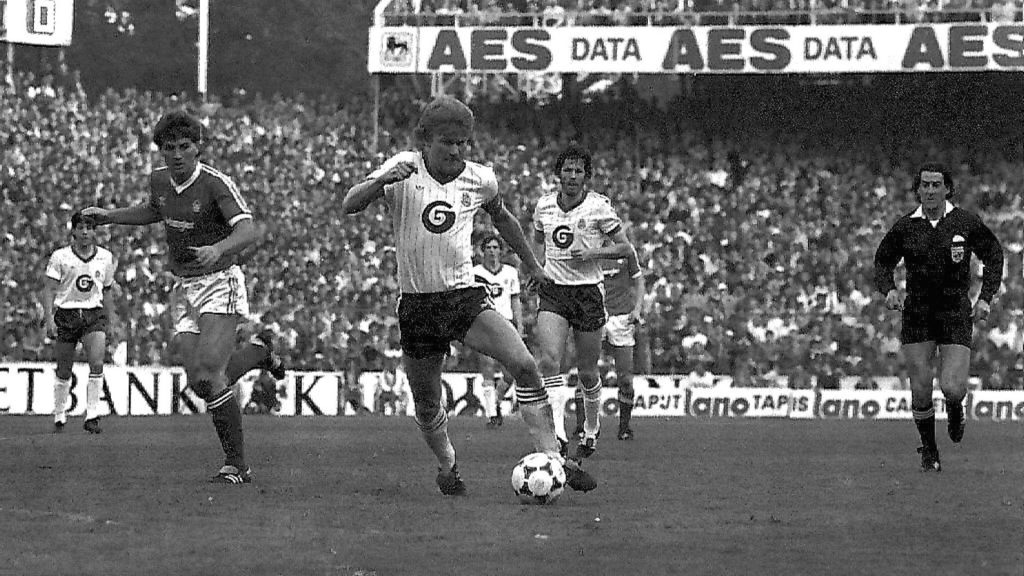
The Belgian capital might seem like a footballing backwater, but if you dig deep enough you find a different story: scandal, tragedy, revolutionary moments – and even the odd decent team. Neil Fredrik Jensen reports on one of the game’s most influential cities.
While Belgium is enjoying a remarkable purple patch in international football, with the national side currently top of the Fifa rankings, its first city registers barely a blip on the sport’s radar.
The country’s top flight, First Division A, features just one team from Brussels. And while that sole representative, Anderlecht, has been a traditional powerhouse in Belgian football, it currently languishes more than 15 points behind the league leaders and finds itself at risk of being overshadowed by provincial rivals.
Meanwhile, Anderlecht’s recent European record is a dismal one: the club have not progressed beyond the group stages of the Champions League since 2001, and has often failed to even get that far. Brussels appears to be, unfairly or not, a byword for bureaucracy and, with clearer justification, a footballing backwater.
It was not always thus, though. The city has a proud heritage in the sport, thanks mostly, but not exclusively, to Anderlecht, which is named after a western district of the capital.

The club has been the dominant force in Brussels football since the Second World War. Indeed, they have won the Belgian championship a record 34 times, since first lifting the trophy in 1947.
But they were not the first team from the capital to be crowned national champions. That honour belongs to Royal Racing Club de Bruxelles, founded in 1894 as an athletics club. Three years later, it won the first of six titles.
Although the club’s original name has long gone, there is still a side called Rhodienne-De Hoek, playing in the lower, amateur reaches of the Belgian football leagues, and based in Sint-Genesius-Rode – in the city’s southern outskirts, not far from Waterloo – that can trace its genealogy back to Racing Club.
Despite their six titles, though, Racing de Bruxelles was not Brussels’ most successful side before the Second World War. This was Union Saint Gilloise.
The club is named after Saint-Gilles, a district just south of the city centre, and in their early days had a nomadic existence around the area. The club was eventually offered a site in Duden Park, a large area of parkland slightly further out, in the neighbouring Forest district. However, construction of the ground was delayed by the First World War and it was not opened until 1919, with a friendly game between USG and AC Milan. The following year, when Antwerp hosted the Summer Olympics, USG’s La Butte stadion was used for three games.
Most of USG’s titles came before the First World War, but the club remained a powerful force during the 1920s and 1930s. La Butte’s parkland surroundings helped to create an atmospheric setting for matches. To get to the pitch, players had to descend a set of wooden stairs which took them right through the crowd. In 1926, the stadium was given an Art Deco facade, which still remains.
However, the stadium’s impressive frontage is now as faded as memories of club’s glory years. From 1933 to 1935 the team played 60 consecutive matches undefeated, a still unbeaten record in Belgium. But its last domestic championship was in 1935 and despite the odd European cup run – including losing in the semi-finals in the 1958-60 Inter-Cities Fairs Cup to Birmingham City – the club has never reached such heights again.
Despite – or perhaps because of – its prolonged lack of success, Union remains something of a cult club and are currently enjoying a revival, albeit in the second tier of Belgian football. Intriguingly, Tony Bloom, chairman of Premier League side Brighton and Hove Albion, became a majority shareholder in USG last year.
While USG declined after the war, Anderlecht enjoyed stunning success. The club had been founded in a cafe in the heart of the district (which neighbours Forest) in 1908, and adopted its colours in honour of Elisabeth of Bavaria, Queen of Belgium, whose royal carriage had been decked out in purple and white on a visit to the neighbourhood. They started out at the lowest level of the Belgian league system and reached the top flight by the start of the 1920s. A decade and a half as a ‘yo-yo team’ followed, with four relegations and four promotions. The last of these was in 1935 and the club has been in the top flight ever since.
Anderlecht’s first league triumph was in 1947 and over the following 20 seasons, the club won the title 13 times. They were unable to convert this to success in Europe, however, often suffering double-figure aggregate defeats to continental opponents.
The club’s European fortunes gradually changed though. In 1970, Anderlecht went painfully close to winning the Inter-Cities Fairs Cup, losing 4-3 on aggregate to Arsenal. And by the end of the decade, the side were a genuine force in European football – difficult to beat in Brussels and distant cousins of the Dutch total footballers across the border. Indeed, some of those cousins even crossed the border. Two members of the Dutch World Cup team of 1974 played for Anderlecht – Robbie Rensenbrink and Arie Haan.
Anderlecht reached three Uefa Cup Winners’ Cup finals in the 1970s and won the tournament twice. In 1976 they beat West Ham United 4-2 at the Heysel Stadium, playing fast and incisive football. Rensenbrink and François Van der Elst, who would join West Ham later in his career, scored two goals apiece. In the summer of 1976, Raymond Goethals arrived at the club after leading the national team between 1968 and 1976. One of Europe’s most sought-after and charismatic coaches, he was known as ‘Raymond-la-science’ for his knowledge of the game.
Always seen with a cigarette screwed into his mouth, Goethals was an advocate of zonal marking and the 3-5-2 formation long before it became fashionable. At Anderlecht, he was fortunate to have some sublimely gifted players who could produce football with a swagger.
Goethals considered that the jewel in Anderlecht’s crown, the introverted Rensenbrink, was often under-rated and from a technical perspective, every bit as good as the more high-profile Johan Cruyff.
In 1977 Anderlecht reached the Cup Winners’ Cup final again, losing 2-0 to Hamburg in Amsterdam’s Olympic Stadium. They were back in the final 12 months later, in Paris’s Parc des Princes, where they secured a 4-0 win against Austria Wien.
European success continued in the 1980s. Anderlecht won the UEFA Cup in 1983 and were runners-up a year later. The side also reached the Cup Winners’ Cup final again in 1990.
Their prolonged domestic and European success has helped make Anderlecht the best-supported side in Belgium. But, as with many metropolitan clubs, much of the fanbase comes from beyond the capital. Indeed, it is claimed that only a minority actually hail from Brussels. Like USG, the club set up home in a stadium in parkland in the 1910s (its earliest games were played next to a graveyard). Unlike Union’s La Butte stadion, though, Anderlecht’s Astrid Park has been extensively modernised over the years, and has hosted Champions League games.
The club had been due to move to a new 60,000 Eurostadium, which was to also host Euro 2020 games and serve as the national stadium. It would have meant a move out of Anderlecht, six miles north to the city outskirts, but the scheme ended in a political row that saw the project scrapped and the Euro games relocated to Wembley.
Anderlecht’s domestic dominance, though, is not what it was, although it is many years since another team from Brussels offered anything like local rivalry. Racing White Daring Molenbeek, the successors to old clubs White Star and Racing White, won the title in 1975, but folded in 2002. In 2015, a group of investors tried to revive this illustrious history, forming a team known as RWDM47, but the side are toiling away in the second tier of amateur football.
Bruges are the current reigning champions and have won two of the last three titles. And the traditional triumvirate of Bruges, Standard Liège and Anderlecht has been challenged in recent years by the rise of Gent and Genk.
In some ways, Bruges, with two teams in the top flight – Cercle Brugge is the other – can claim to be more of a footballing hotbed than the capital.
Much of Brussels’ history in club football has not involved its own teams, however. The Heysel Stadium disaster, in which 39 people – mostly Italians – were killed after a wall collapsed during confrontations between Liverpool and Juventus fans just before the 1985 European Cup final, proved a watershed for the sport.
The ground was Belgium’s national stadium and had previously hosted European Cup finals in 1958, 1966 and 1974 and Cup Winners’ Cup finals in 1964, 1976 and 1980. However, it was poorly maintained, with large parts of it literally crumbling. Its abject condition was subsequently identified as one of the contributing factors towards the disaster.
In the short term, the tragedy prompted a ban on English clubs from European competitions. It also marked the start of the long decline in hooliganism, and the beginning of a modernisation process that would transform the sport.
In that modernisation process, Brussels has also played another massive – if under-appreciated – role. And, aptly enough, it is a role that involves the city’s most notorious quality: bureaucracy.
As the national capital, Brussels is home to the Royal Belgian Football Association. And it was the association’s men in suits – along with RFC Liège and Uefa – who were taken to court by the midfielder Jean-Marc Bosman, who challenged, and ultimately overturned, the rules governing football transfers, leading to profound changes for the sport. Bosman’s case, of course, rested on another significant Brussels innovation: European law.
It may not have always seem it, from the action on the pitch, but Brussels can stake a claim to be the most influential city in European football.








